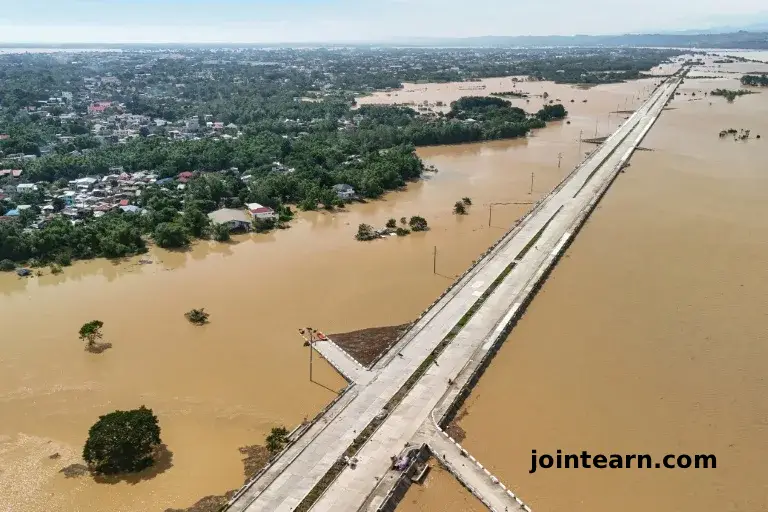
MANILA, Philippines (AFP) — Rescue teams in the Philippines are working tirelessly to dig out communities devastated by Typhoon Fung-wong, as floodwaters recede and the storm’s death toll rises to 18. The severe tropical storm, which displaced more than 1.4 million people, weakened as it approached Taiwan, but wreaked havoc across northern and central provinces of the Philippines.
Widespread Destruction and Isolated Communities
Across northern provinces such as Isabela, Nueva Vizcaya, and Cagayan, landslides and flash floods blocked access to towns and villages, leaving many communities isolated. In Nueva Vizcaya, a 10-year-old boy was among the victims killed by landslides.
Cagayan Valley region spokesman Alvin Ayson said, “We are struggling to access these areas. Others are now in evacuation centres, but when they return home, rebuilding will be a long and challenging process.”
Rescuers are using backhoes, boats, and chainsaws to clear roads and navigate flooded streets to rescue those still trapped in multi-story homes. In Cagayan’s Centro 4 village, water levels rose chest-deep, forcing residents onto upper floors while awaiting evacuation.
Flooding and Infrastructure Damage
The overflowing Chico River in Apayao province caused severe flash flooding, while Tuguegarao City in Cagayan was buried by waters from the largest river basin in the region. Over 5,000 people were safely evacuated before the river flooded nearby settlements.
Residents on Catanduanes Island are facing water supply shortages that could take up to 20 days to restore, while roads, power lines, and communication infrastructure across affected regions remain damaged. Local resident Jossa Floranza described her exhaustion after losing multiple homes to successive storms, saying, “We thought we were safe here… I am very tired of this. So tired.”
Typhoon Fung-wong and Regional Impact
Fung-wong struck the Philippines as a super typhoon, with winds of 185 kph (115 mph) and gusts up to 230 kph (143 mph). It followed closely on the heels of Typhoon Kalmaegi, which killed 232 people in central islands just last week.
In Taiwan, the storm has caused the closure of schools and offices across multiple counties. Up to 400 millimetres (16 inches) of rain is expected in the next 24 hours as the approaching storm intensifies the northeast monsoon. President Lai Ching-te urged citizens to avoid mountainous areas, beaches, and other dangerous locations.
Climate Change and Increasing Typhoon Intensity
Experts warn that human-driven climate change is intensifying storms in the region. Warmer oceans fuel faster strengthening of typhoons, while a warmer atmosphere holds more moisture, leading to heavier rainfall and flooding.
Philippine President Ferdinand Marcos extended the state of national calamity declared after Typhoon Kalmaegi to a full year, reflecting the continuing vulnerability of the nation to increasingly severe weather events.


Leave a Reply